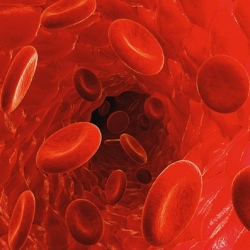
Researchers at Beth Israel Deaconess Medical Center (BIDMC) have found that combining two antibiotics that no longer work can create a treatment that’s once again effective against antibiotic-resistant bacteria. Recent reports paint a pretty grim picture of medicine’s future.
Bacteria adapt incredibly fast, and the individuals that survive a blast of antibiotics are quick to pass that ability along. Before you know it only the strong ones remain, and entire populations become resistant to drugs that just a few years earlier would have cured an infection. In past decades, doctors would basically move onto new drugs at that point, using them until the bugs developed resistance to those as well.
But that cycle, as you may have guessed, isn’t sustainable, and it appears that we’re starting to lose the arms race against bacteria. A recent UK government review predicted that we could be cast back into the "dark ages of medicine" by 2050, with superbugs killing as many as 10 million people a year. Particularly alarming is the fact that the drugs that make up our last line of defense are now beginning to fail in large numbers.
To help combat the issue researchers have been trying to develop new antibiotics, with promising leads found in unexpected places like platypus milk and rattlesnake venom. Other approaches are more focused on making existing treatments more useful once again, including molecules that knock out bacteria’s immunity to drugs, supercharging old antibiotics or re-enlisting overlooked ones.
The new work from BIDMC falls into that latter category. The researchers set out to test whether pairing up drugs could help them take down superbugs, even if they’re no longer effective individually. Their focus was on colistin, an antibiotic that was discontinued decades ago due to its toxicity to the kidneys. In desperation, scientists have dusted it off in recent years as a last resort, but bacteria are even developing resistance to that now, too.
In a series of tests, the BIDMC team combined colistin with 19 other antibiotics to see how well each combination worked. Several proved effective against the superbugs, with linezolid, fusidic acid and clindamycin being the clear standouts.
"It was remarkable to see two drugs, each of which is inactive on its own against these bacteria, inhibiting them in combination," says Thea Brennan-Krohn, co-author of the study. "These findings suggest that colistin retains sub-lethal activity against colistin-resistant bacteria, which may enable drugs like linezolid to reach their targets."
The other advantage of the dynamic duos is that smaller doses of colistin are needed in each treatment, which could help reduce the toxic side effects of the drug. That also means that future resistance should develop more slowly, buying researchers time to create new drugs and longer-term strategies to fight off the bugs.
